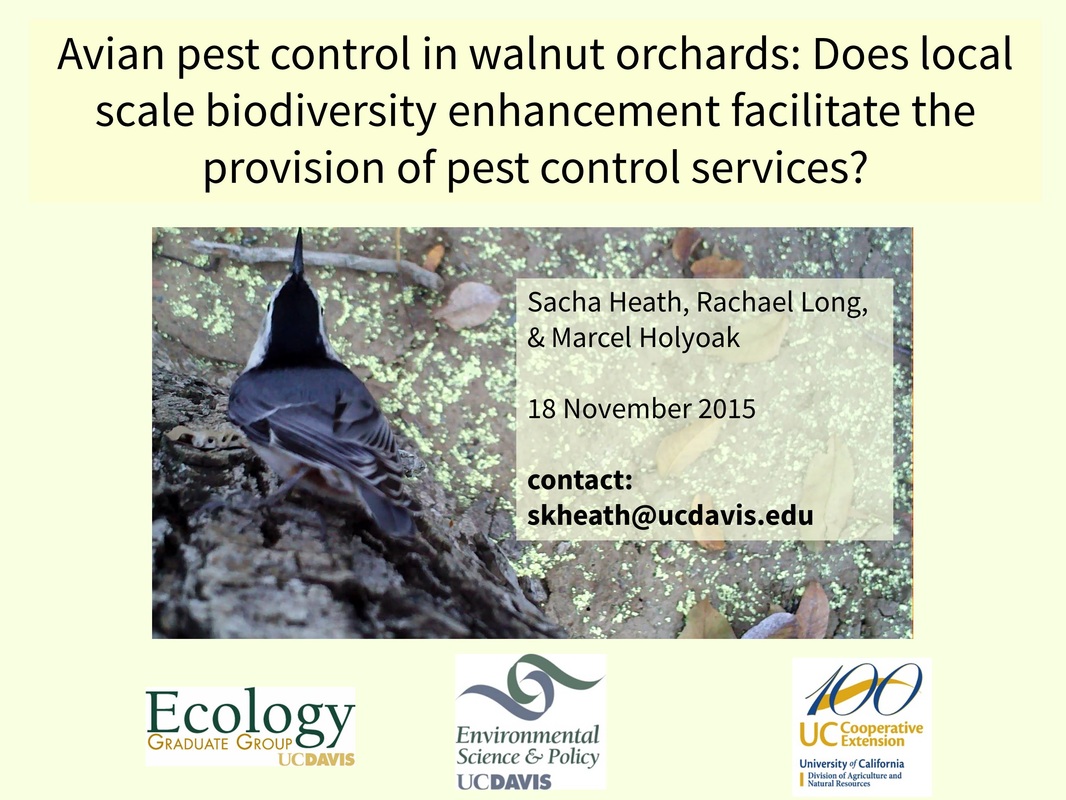|
I presented some of my research at the EntSA meeting in Minneapolis, Minnesota this past week. It was my first time at an entomological meeting, because I usually study the birds that eat invertebrates (insectivores) and spend more of my time following the work of community ecologists or ornithologists. Crossing over somewhat and interacting with folks from different societies or with different research interests than my own is one of my favorite things to do, though, so I was very excited to take part in the Section Symposium: Integrating Ecological and Social Science to Support Synergies and Applied Solutions in Agroecosystems, organized by Kelly Garbach and Katharina Ullman.
One of my aims in deciding to go to grad school was to stretch outside of my bird-centered way of thinking about ecology and conservation. Conducting research in agricultural systems has been a great way to interact with many different types of researchers, growers, and policy makers. Being invited to participate in this seminar is a signal to me that I am on my way to meeting this aim.
One of the best parts of attending a conference is the time spent socializing over meals and drinks with amazing and interesting people. All of these folks are doing really interesting work in agriculture and biodiversity conservation both from the ecological research and the social science research perspectives.
The title slide of my talk.
And a nice tweet from @KellyGarbach of me after my talk answering a question from David Kleijn, whose work has greatly influenced mine. Another important reason for attending conferences!
0 Comments
I was invited by the California Walnut Board’s Production Research Advisory Council Entomology Working Group to present my research on walnut pest reduction by birds. This is exactly the kind of work I want to be doing: conducting research that informs conservation and environmental policy and interacting with the stakeholders that influence and are affected by policy changes. Walnuts are a huge agricultural commodity in the Central Valley of California; this area produces over 99% of U.S. walnuts. Birds utilize walnut orchards during all seasons and walnut orchards cover a lot of land. I want to know if birds reduce the pests that cause walnut growers so much grief, if there are practices we can use in orchards (e.g., habitat retention or restoration) to facilitate bird occupancy and pest reduction services, and whether bird consumption rates of walnut pests is high enough to reduce the number of pesticide applications needed in orchards. Thus, the walnut board is a really important stakeholder with which to share my research. I think the talk went well. I don't think anyone is jumping on the habitat creation bandwagon because of my talk, but I'm pretty sure that some of the folks in the room had never considered birds as a possible beneficial predator of walnut pests. I also learned a lot about what the biggest concerns are of the Board, and about some interesting research from entomologists who presented. My colleague Kate Ingram also presented her work on walnut pest reduction by bats.
|
|


 RSS Feed
RSS Feed